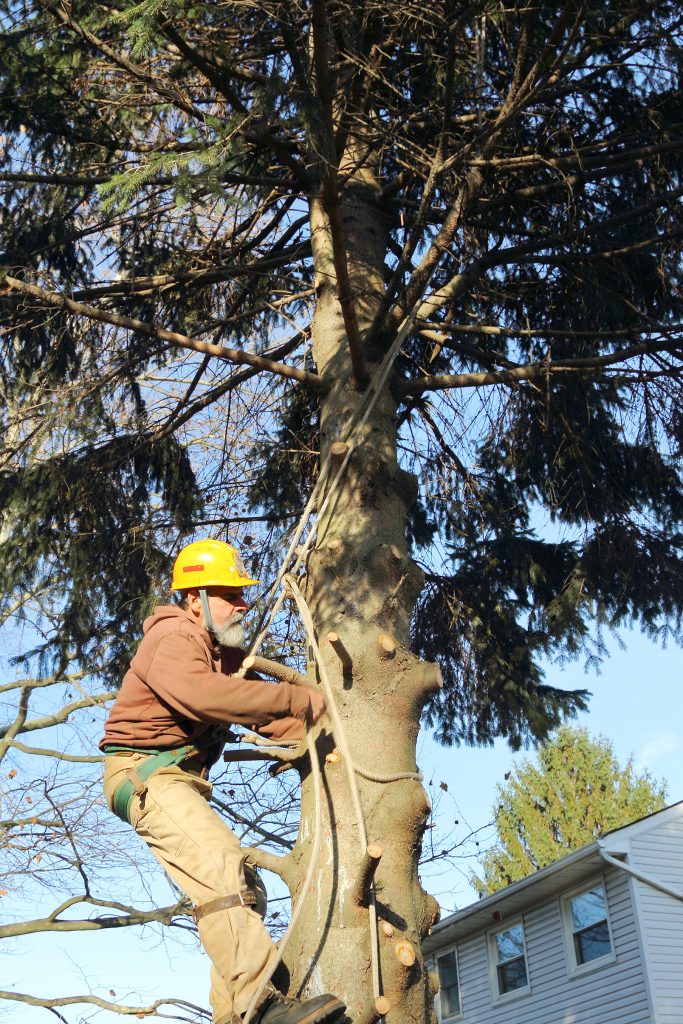
By Stephen Appezzato
LITTLE SILVER – Borough officials have until May 1 to pass a far-reaching tree removal ordinance that would set procedures for maintaining the town’s canopy and punishments for those who skirt the rules.
The tree removal and replacement ordinance, expected to be introduced at the next borough council meeting April 8, will codify requirements for taking down trees to reduce soil erosion, pollution and stormwater runoff, protect the town’s canopy, and deter egregious clear-cutting. At the recent March 25 council meeting, officials revealed what the ordinance could entail and how it may be enforced.
“The whole mission of the tree ordinance is to maintain the canopy,” said council member Donald Galante. “If you do something erroneously and you violated the process by trying to get one over on everybody, then you’re going to get a violation,” he said.
Residents can anticipate the impending ordinance will create an application process for removing trees with a diameter of 8 inches or more at breast height (DBH). Tree removals will be evaluated on a case-by-case basis and, if approved, will require residents to replace trees by planting new trees on their property or writing a check to the borough to plant trees on public property if they cannot do so on their own land.
Homeowners and tree services caught chopping trees without following the application process can face a fixed fine – potentially up to $2,000 in severe cases – and incur the cost of the value of the wrongfully removed tree. Furthermore, a commission could be established to oversee the new tree process, hire a tree expert and potentially a new secretary.
“It’s a far-reaching ordinance,” Mayor Robert Neff said.
“I am concerned about creating a pretty large bureaucracy, creating this new expense for the borough, a lot of which will be passed on to the resident,” he said.
Last year, the state Department of Environmental Protection (DEP) mandated towns must establish tree removal and replacement guidelines to address flooding, stormwater runoff and public health concerns. The agency unveiled a general ordinance that can be used as a guide for towns. While some towns in the area already have similar laws in place, Little Silver must put something on the books before the May 1 deadline.
“The reality here is that it’s a mandate, so we have to do it. We have to do it the fairest way possible,” Galante said.
“Five or six years ago, I would have said, ‘You paid a million and a half dollars for your piece of property in Little Silver, you can darn well do whatever you want with them (trees).’ You want to cut every tree down? You should be able to do it,” Neff said.
But now, Neff said, he has seen some “really egregious examples” of clear-cutting. “All of a sudden, every tree on (a property) is gone and up goes a house. That really was the impetus for putting something like this together.”
During the workshop, concerns were raised over the arbitrary procedure for determining the value of a wrongfully removed tree.
Council member Kevin Brennan posed an example of how this process could play out.
“We have three big trees on the property (that are) probably somewhere between 150, 175 years old. In the case where I decided to take a tree down without filing the proper paperwork, that’s a huge loss to the tree canopy,” Brennan said. That violation must then be appraised and the violator required to pay the determined value of the tree, as well as a base punishment fee.
It is unclear how the value of a tree will be determined at this time. One idea that was floated would follow state guidelines, which refer boroughs to an appraisal book published by the Council of Tree and Landscape Appraisers and the International Society of Arboriculture.
Neff said he still has concerns, but, due to NJDEP mandates, borough officials do not have much say in the matter.
Residents can expect the finalized tree ordinance to be introduced at the April 8 council meeting with a public hearing and adoption vote slated for the following meeting.
The article originally appeared in the March 28 – April 3, 2024 print edition of The Two River Times.














